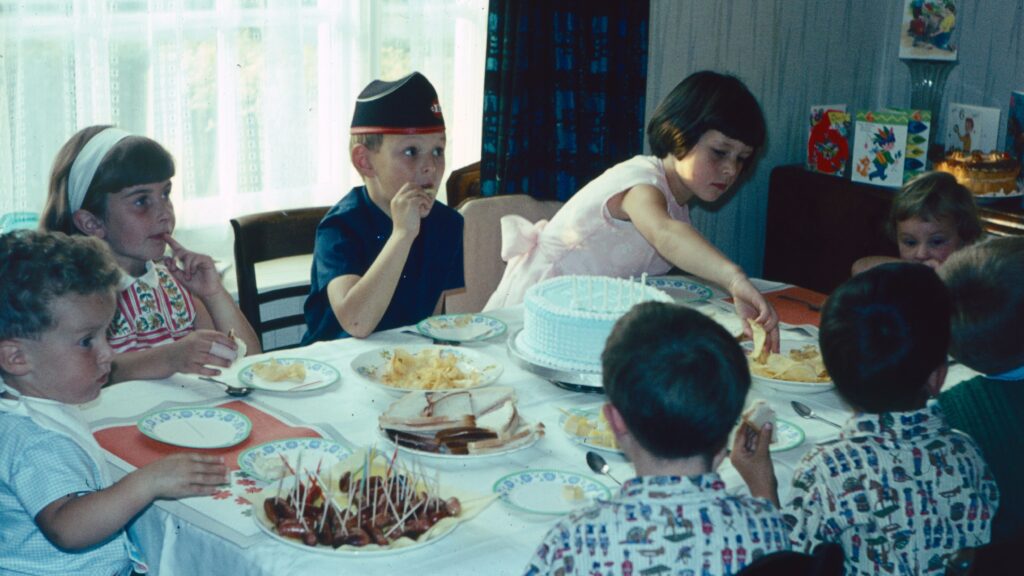If you grew up in the nineties, you probably have vivid memories of dial-up internet, Saturday morning cartoons, and hours spent playing outside until the streetlights came on. For many of us, our childhoods were full of freedom, less supervision, and parenting styles that were very different from what we see today. Now that we are raising children of our own, it is natural to compare how we were brought up with how we parent.
This post is a nostalgic reflection for those of us who were 90s kids and are now navigating parenthood. We will explore what parenting looked like then, what it looks like now, and how our generation is blending the best of both worlds.
The Nineties Childhood: A Snapshot
Growing up in the 90s felt simple in many ways. Technology was limited, safety rules were looser, and kids were often trusted to entertain themselves. Parents cared deeply, but there was less pressure to constantly monitor, stimulate, or enrich every moment.
Common features of 90s parenting included:
-
Playing outside without constant adult supervision
-
Limited screen time because screens themselves were limited
-
Hand-me-down clothes, packed lunches, and practical parenting choices
-
Learning independence early through chores, bike rides, and walking to school
-
A “you will be fine” approach to minor scrapes and disappointments
Parent Tip: Many 90s kids remember the freedom to ride bikes with friends, often without mobile phones. While times are different now, giving children small chances to build independence still matters today.
Parenting Today: The 2020s Snapshot
Fast forward to today, and parenting looks very different. Technology dominates family life, from tablets and streaming services to social media. There is also much more awareness of children’s emotional wellbeing and safety.
Key features of modern parenting include:
-
Close supervision and structured activities
-
Greater focus on gentle parenting and emotional validation
-
Higher use of technology both as entertainment and as a parenting aid
-
Increased concern about safety, from stranger danger to online risks
-
More products, classes, and advice targeted at parents
The NHS highlights how today’s guidance places emphasis on child development milestones, emotional support, and safe environments. These resources are invaluable, but they can also make modern parents feel under pressure to do everything “right.”
Then vs Now: A Generational Comparison
| Parenting in the 90s | Parenting Today |
|---|---|
| Free play outdoors until dark | Structured activities and playdates |
| Screen time meant TV or Nintendo | Screen time includes tablets, streaming, and social media |
| Less emphasis on emotional language | Greater focus on validating feelings and gentle parenting |
| Parents relied on intuition and family advice | Parents have NHS, blogs, podcasts, and endless online resources |
| “You will be fine” resilience building | Focus on protecting emotional wellbeing |
Pro Tip: The balance may lie in combining the best of both worlds. Freedom and resilience from the 90s, blended with today’s emotional awareness and safety standards, can create a healthy approach.
Why Parenting Changed
Several factors explain why parenting shifted so much in just a few decades:
-
Technology Boom
The internet, smartphones, and social media have transformed how children learn and play. Parents must now teach digital safety and manage online exposure, something our parents never dealt with. -
Safety Awareness
There is more research about child safety and wellbeing today. Organisations like the NSPCC have raised awareness about safeguarding, leading parents to supervise more closely. -
Mental Health Focus
Today’s parents are more aware of children’s emotional health. The rise of gentle parenting, promoted by books and resources like Unicef Parenting, reflects this shift. -
Cultural and Social Pressures
Social media has added a layer of comparison and pressure. Parents often feel they need to provide picture perfect experiences, unlike the more private parenting of the 90s.
What We Can Learn From the 90s
While modern parenting brings valuable insights, there are aspects of 90s parenting worth remembering.
-
The Value of Free Play: Playing outside unsupervised taught independence, problem solving, and resilience. While safety is important, giving children unstructured playtime is still essential.
-
Less Pressure on Perfection: Our parents often did not have parenting guides at their fingertips, and that allowed them to trust their instincts. Trusting yourself is still important today.
-
Community Spirit: Many 90s children grew up surrounded by neighbours, cousins, or local kids. Building community support is just as important now, even if it looks different.
Expert Tip: Encourage your child to take small risks, such as climbing a playground ladder or making decisions about what game to play. This builds resilience in safe, age appropriate ways.
What We Gain From Today’s Parenting
Modern parenting is not without its strengths. In fact, it has improved in many ways compared to the 90s.
-
Emotional Literacy: Today’s children are often better equipped to talk about feelings and mental health.
-
Safety Knowledge: Car seats, sleep safety guidelines, and safeguarding practices have saved lives.
-
Inclusive Parenting: There is more awareness of diverse family structures, neurodiversity, and special educational needs.
-
Shared Parenting: Fathers are now more likely to be active caregivers thanks to evolving cultural norms and shared parental leave policies in the UK.
Finding a Balance
The sweet spot for our generation of parents might be in blending both approaches. Taking the independence and resilience of 90s childhoods, while also embracing today’s focus on emotional health and safety, can create a balanced parenting style.
Think of it as “instinct plus information.” Trusting your gut while making use of the excellent resources available today allows you to raise confident, resilient, and emotionally secure children.
Parent Tip: Reflect on your own childhood. Which parts do you want to pass on, and which do you want to adapt? This reflection can guide your parenting values.
Final Thoughts
Being a 90s kid now raising children is a unique experience. We remember the freedom of our own childhoods but also value the advances in emotional support and safety that modern parenting brings. Instead of choosing between the past and the present, we can learn to combine them.
By blending independence with emotional literacy, intuition with expert advice, and playtime with safety awareness, we can raise the next generation with both resilience and compassion. Parenting will always evolve, but our shared memories as 90s kids give us a foundation that is both nostalgic and inspiring.
Frequently Asked Questions About Nineties-Style Parenting
Can I use some of the parenting approaches my parents used in the 90s?
Yes. Many elements such as encouraging outdoor play, giving children independence, and teaching resilience are still valuable today. You may just need to adapt them to modern safety and lifestyle standards.
Why does parenting feel more stressful today than in the 90s?
Parents today face more social pressures, especially from social media, as well as higher living costs and more structured schedules for children. While 90s parents worried too, the cultural landscape was less demanding.
Is gentle parenting really better than the “tough love” approach of the 90s?
Gentle parenting is backed by research showing that validating children’s emotions supports healthy development. However, many parents find balance by combining emotional support with the independence and resilience-building that defined the 90s.
How can I give my child independence without compromising safety?
Start small. Allow children to make age-appropriate choices, take supervised risks in play, or walk short distances with you nearby. Gradual independence builds confidence without removing necessary safeguards.
What lessons from the 90s are no longer relevant today?
Some practices, such as limited seatbelt use or letting children roam unsupervised at very young ages, do not meet modern safety standards. It is best to adapt the positive aspects of 90s parenting without ignoring current health and safety research.



